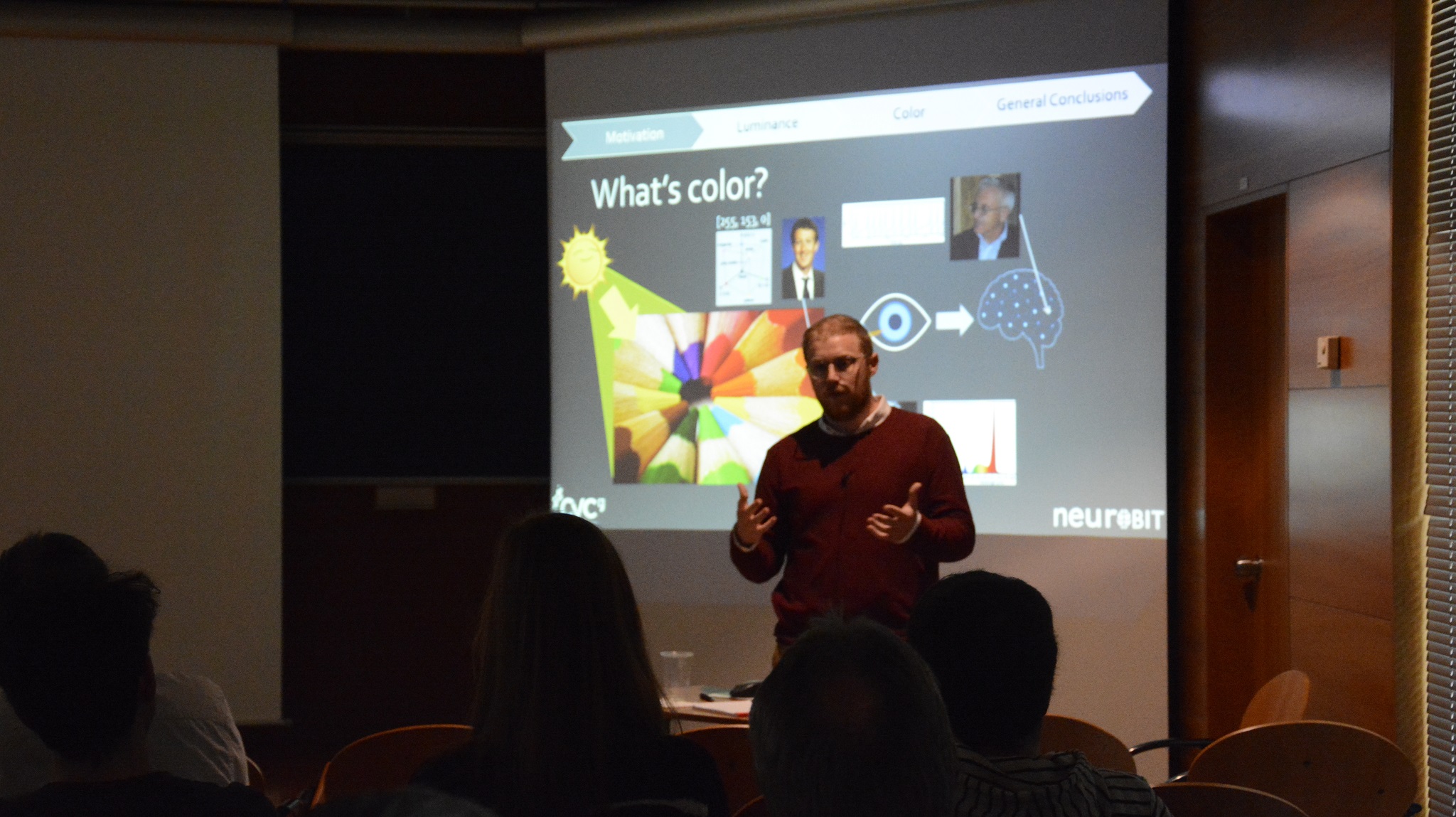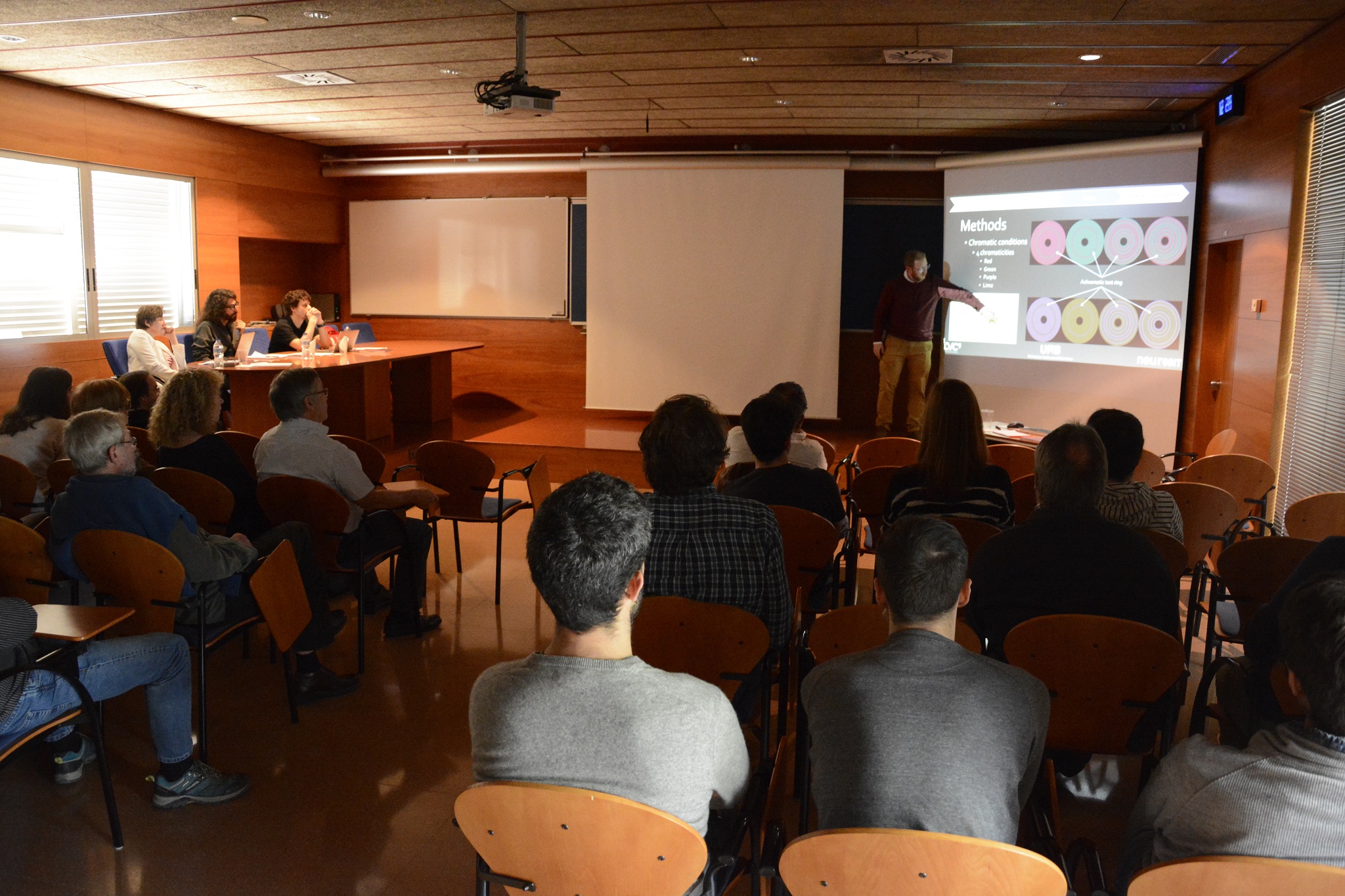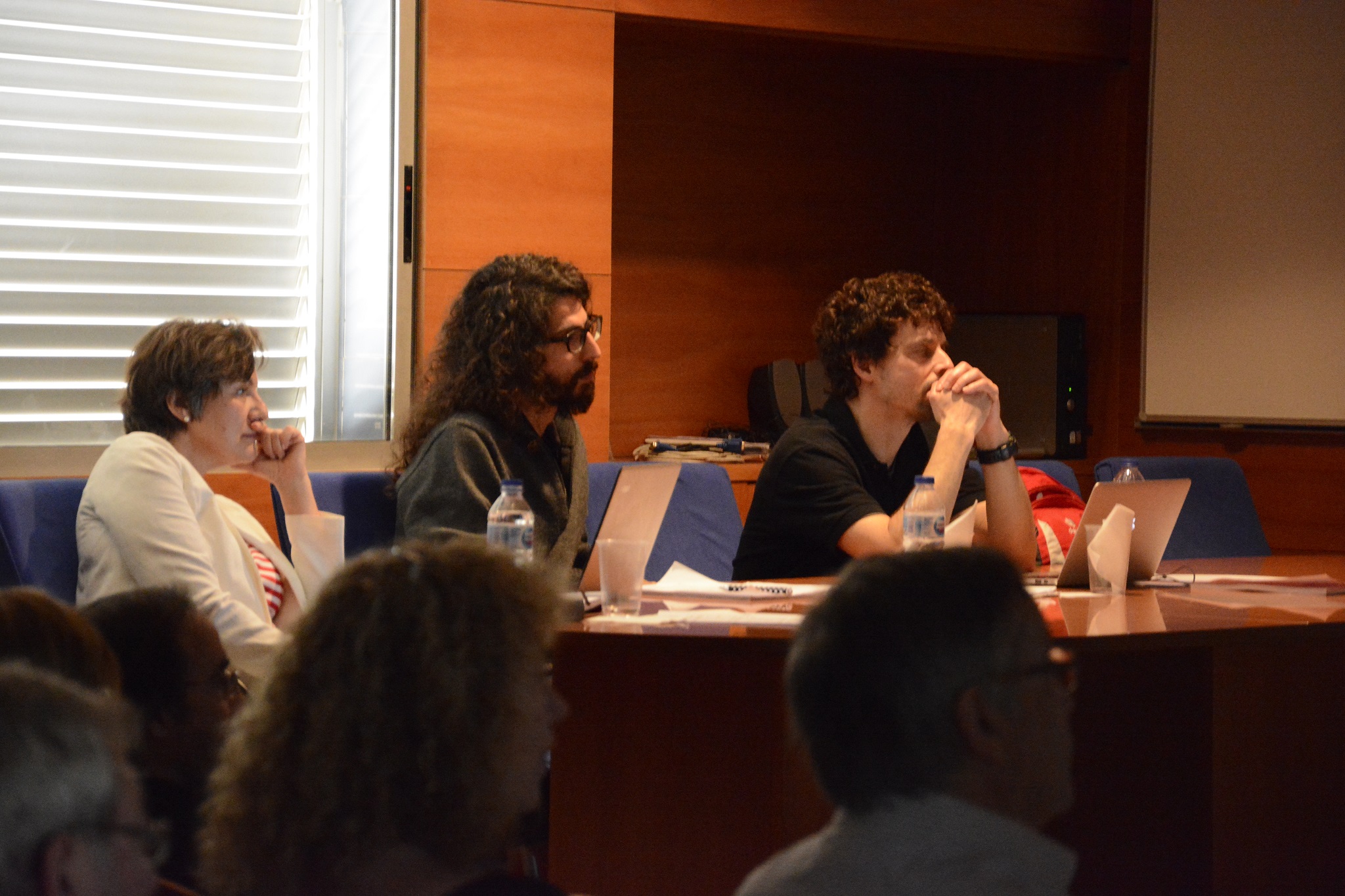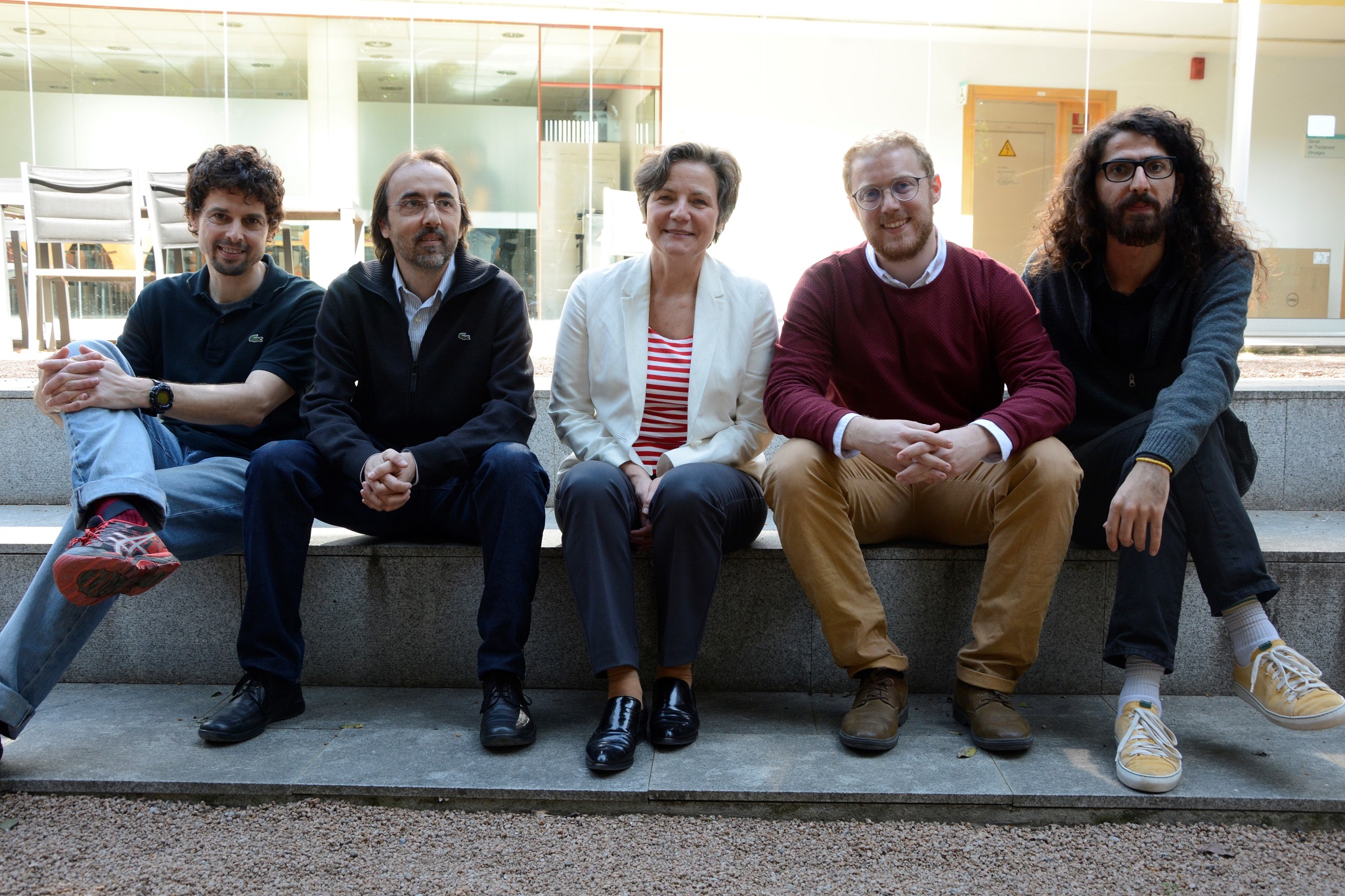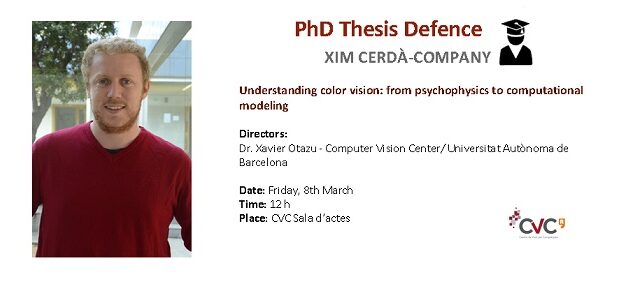
CVC has a new PhD on its record!
Abstract:
In this PhD we have approached the human color vision from two different points of view: psychophysics and computational modeling. First, we have evaluated 15 different tone-mapping operators (TMOs). We have conducted two experiments that consider two different criteria: the first one evaluates the local relationships among intensity levels and the second one evaluates the global appearance of the tonemapped imagesw.r.t. the physical one (presented side by side). We conclude that the rankings depend on the criterion and they are not correlated. Considering both criteria, the best TMOs are KimKautz (Kim and Kautz, 2008) and Krawczyk (Krawczyk, Myszkowski, and Seidel, 2005). Another conclusion is that a more standardized evaluation criteria is needed to do a fair comparison among TMOs.
Secondly, we have conducted several psychophysical experiments to study the color induction. We have studied two different properties of the visual stimuli: temporal frequency and luminance spatial distribution. To study the temporal frequency we defined equiluminant stimuli composed by both uniform and striped surrounds and we flashed them varying the flash duration. For uniform surrounds, the results show that color induction depends on both the flash duration and inducer’s chromaticity. As expected, in all chromatic conditions color contrast was induced. In contrast, for striped surrounds, we expected to induce color assimilation, but we observed color contrast or no induction. Since similar but not equiluminant striped stimuli induce color assimilation, we concluded that luminance differences could be a key factor to induce color assimilation. Thus, in a subsequent study, we have studied the luminance differences’ effect on color assimilation.
We varied the luminance difference between the target region and its inducers and we observed that color assimilation depends on both this difference and the inducer’s chromaticity. For red-green condition (where the first inducer is red and the second one is green), color assimilation occurs in almost all luminance conditions. Instead, for green-red condition, color assimilation never occurs. Purple-lime and lime-purple chromatic conditions show that luminance difference is a key factor to induce color assimilation. When the target is darker than its surround, color assimilation is stronger in purple-lime, while when the target is brighter, color assimilation is stronger in lime-purple (’mirroring’ effect). Moreover, we evaluated whether color assimilation is due to luminance or brightness differences. Similarly to equiluminance condition, when the stimuli are equibrightness no color assimilatio is induced. Our results support the hypothesis that mutual-inhibition plays a major role in color perception, or at least in color induction.
Finally, we have defined a new firing rate model of color processing in the V1 parvocellular pathway. We have modeled two different layers of this cortical area: layers 4Cb and 2/3. Our model is a recurrent dynamic computational model that considers both excitatory and inhibitory cells and their lateral connections. Moreover, it considers the existent laminar differences and the cells’ variety. Thus, we have modeled both single- and double-opponent simple cells and complex cells, which are a pool of double-opponent simple cells. A set of sinusoidal drifting gratings have been used to test the architecture. In these gratings we have varied several spatial properties such as temporal and spatial frequencies, grating’s area and orientation. To reproduce the electrophysiological observations, the architecture has to consider the existence of non-oriented double-opponent cells in layer 4Cb and the lack of lateral connections between single-opponent cells. Moreover, we have tested our lateral connections simulating the center-surround modulation and we have reproduced physiological measurements where for high contrast stimulus, the result of the lateral connections is inhibitory, while it is facilitatory for low contrast stimulus.



